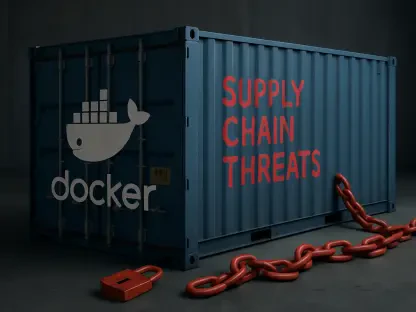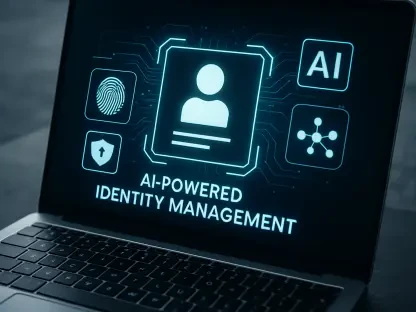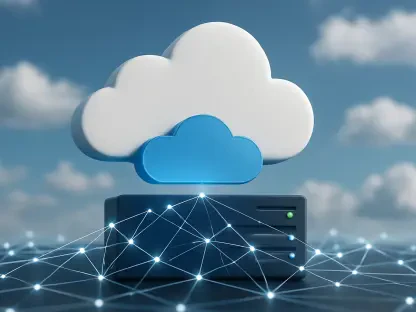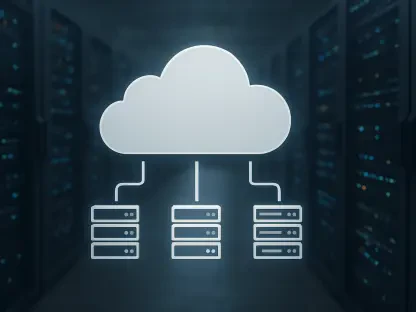In an era where federal agencies face mounting pressure to deliver efficient, secure, and adaptable services, the reliance on outdated IT infrastructure poses a significant barrier to progress, stifling innovation and efficiency. Many of these agencies still operate on legacy systems for HR and financial management, built on technology that dates back decades, resulting in ballooning maintenance costs and persistent technical debt. These fragmented, custom-coded setups not only drain resources but also expose vulnerabilities that threaten mission-critical operations. Amid this challenge, a software-as-a-service (SaaS) model emerges as a transformative solution, promising to shift the paradigm from constant firefighting to strategic innovation. This discussion delves into the compelling reasons for federal entities to prioritize SaaS, examining how it addresses longstanding inefficiencies and aligns with the urgent need for modernization.
The appeal of SaaS lies in its ability to break the cycle of costly upgrades and disjointed systems that plague traditional IT environments. By adopting a unified platform, agencies can access regular updates without the disruption of overhauls, streamline operations, and enhance security through vendor-managed infrastructure. This approach also offers financial relief by replacing large upfront investments with predictable subscription costs, allowing for better budget allocation. As federal demands evolve, the scalability and user-friendly design of SaaS platforms ensure that employees can engage with technology intuitively, driving adoption and efficiency. Exploring these advantages reveals a clear path forward for agencies seeking to overcome the limitations of the past and build a foundation for future success.
Breaking Free from Outdated Infrastructure
The Weight of Technical Debt
Federal agencies have long been tethered to legacy systems, many of which are coded in antiquated languages like COBOL, creating a heavy burden of technical debt that grows more expensive with each passing year. These systems demand specialized expertise for maintenance, a skill set that is increasingly rare and costly to secure. Upgrades often require disruptive “rip and replace” efforts, draining budgets and diverting focus from mission priorities. The inability to adapt swiftly to new regulatory requirements or operational needs further compounds the issue, leaving agencies in a constant state of catch-up. This outdated infrastructure not only stifles innovation but also poses significant risks to data integrity and security, as patches and fixes struggle to keep pace with modern threats. Addressing this technical debt is no longer optional; it is a critical step toward ensuring that federal operations remain effective and resilient in an ever-changing landscape.
Beyond the financial strain, the operational impact of clinging to legacy technology manifests in inefficiencies that hinder service delivery across federal entities. Agencies often grapple with fragmented systems that fail to communicate with one another, leading to duplicated efforts and inconsistent data. This lack of integration undermines decision-making, as leaders must navigate a patchwork of information rather than a unified source of truth. Moreover, the time and resources spent on maintaining these aging platforms detract from strategic initiatives that could better serve the public. The persistent cycle of short-term fixes over long-term solutions traps agencies in a reactive mode, unable to prioritize forward-thinking projects. Moving away from such outdated setups is essential to free up capacity for innovation and to align IT capabilities with the dynamic needs of government missions.
Cultural Barriers to Modernization
A significant obstacle to adopting new technology in federal agencies is the entrenched mindset of adhering to familiar methods, often summarized as “we’ve always done it this way.” This resistance to change permeates many organizational cultures, where the comfort of known systems overshadows the inefficiencies they perpetuate. Employees and leaders alike may view modernization efforts with skepticism, fearing the learning curve or potential disruptions that accompany new platforms. Such hesitation delays the adoption of solutions that could streamline operations and reduce costs over time. Overcoming this cultural inertia requires not just technological shifts but also a concerted effort to demonstrate the tangible benefits of change, ensuring that stakeholders understand how modern tools can enhance rather than complicate their work. Breaking down these barriers is a crucial step toward embracing a future-focused IT strategy.
The ripple effects of this resistance extend beyond delayed implementations, impacting morale and productivity within federal workforces. When agencies remain tied to clunky, outdated systems, employees often face frustration from inefficient workflows and limited access to modern tools that could simplify their tasks. This dissatisfaction can erode trust in leadership’s ability to prioritize operational needs, fostering a sense of stagnation. Additionally, the longer agencies postpone modernization, the greater the risk of falling behind private-sector counterparts who leverage cutting-edge technology to drive efficiency. Addressing this cultural reluctance involves fostering an environment where change is seen as an opportunity for improvement, supported by clear communication and training to ease the transition. Only by tackling these deep-seated attitudes can federal entities fully commit to the transformative potential of new approaches.
Embracing the Benefits of SaaS Solutions
Seamless Updates and Innovation
One of the standout advantages of a SaaS-first approach for federal agencies is the promise of continuous innovation without the disruption tied to traditional system upgrades. SaaS platforms deliver biannual updates to a single, shared software version, ensuring all users benefit from the latest features and improvements without the need for costly overhauls. This model contrasts sharply with legacy setups that often require extensive downtime and large IT teams to implement changes. Agencies can leverage sandbox environments to test new functionalities safely, tailoring integrations to their specific workflows before full deployment. This streamlined process keeps systems current while minimizing risks, allowing IT staff to shift focus from routine maintenance to high-value strategic initiatives. The result is an agile environment where technology evolves in step with mission demands, positioning agencies to respond effectively to emerging challenges.
The impact of seamless updates extends to fostering a culture of adaptability within federal operations, a critical asset in a landscape of constant change. With SaaS, agencies avoid the paralysis that often accompanies major system overhauls, as enhancements are rolled out incrementally and without interruption to daily functions. This consistent access to cutting-edge tools enables employees to stay ahead of evolving requirements, whether addressing new compliance mandates or integrating advanced analytics for decision-making. Furthermore, the reduced burden on internal IT resources means that teams can dedicate more time to exploring innovative applications of technology that directly support public service goals. By embedding continuous improvement into their IT framework, federal entities can build resilience and ensure that their systems remain relevant, no matter how quickly external conditions shift.
Financial and Security Advantages
Adopting a SaaS model offers federal agencies substantial financial relief through a subscription-based operating expense (OpEx) framework, a stark departure from the hefty upfront capital expenses (CapEx) associated with legacy systems. This shift eliminates the need for significant initial investments in hardware or software, replacing them with predictable, manageable costs that align with budget constraints. SaaS vendors take on responsibilities such as hosting, maintenance, and regular security updates, further reducing the financial and operational risks for agencies. This arrangement allows for more efficient allocation of funds toward mission-critical priorities rather than sinking resources into outdated infrastructure. The cost predictability and reduced overhead create a fiscal environment where agencies can plan with confidence, knowing that unexpected IT expenditures are largely mitigated.
Security, a paramount concern for federal operations, also benefits immensely from the SaaS approach, as vendors integrate robust protections directly into the platform’s core. Unlike legacy systems, where security patches often lag behind emerging threats, SaaS solutions ensure that defenses are updated in real-time, safeguarding sensitive data against breaches. This vendor-managed model alleviates the burden on internal teams to constantly monitor and address vulnerabilities, a task that grows increasingly complex with older technology. Additionally, the consolidation of systems into a unified platform minimizes the attack surface compared to disparate, siloed applications prone to inconsistencies. By leveraging these built-in security features, agencies can enhance their resilience against cyber threats while maintaining compliance with stringent federal regulations, ensuring that public trust in their operations remains intact.
User-Centric Design and Efficiency
SaaS platforms transform the way federal employees interact with technology by prioritizing a user experience that rivals consumer-grade applications. Featuring intuitive interfaces, mobile accessibility, and self-service tools, these systems are designed to minimize the learning curve and encourage widespread adoption across agencies. Unlike the cumbersome, outdated applications of the past, modern SaaS solutions empower users to handle routine tasks independently, reducing dependency on extensive training or IT support. This accessibility translates into tangible efficiency gains, as employees spend less time navigating complex systems and more time focusing on their core responsibilities. The result is a workforce better equipped to deliver on mission objectives, supported by technology that feels familiar and responsive to their needs.
The efficiency benefits of SaaS extend to streamlining critical processes such as personnel actions and compliance tasks, which often bog down federal operations when managed through legacy setups. With a unified platform acting as a single source of truth, data inconsistencies are minimized, enabling faster and more accurate decision-making. Mobile access further enhances productivity by allowing employees to engage with systems from anywhere, accommodating the growing demand for flexible work arrangements. Additionally, self-service features reduce administrative overhead, freeing HR and finance teams to address strategic priorities rather than routine inquiries. This user-centric design not only boosts operational effectiveness but also fosters a sense of empowerment among staff, as they gain greater control over their workflows through tools that are both accessible and reliable.
Charting a Path to Modern Federal IT
Consensus on Cloud-Based Transformation
A growing consensus among federal leaders highlights the urgent need for modernization through cloud-based SaaS solutions, marking a decisive shift away from the limitations of legacy systems. This recognition stems from the unsustainable costs and operational inefficiencies that traditional platforms impose, which hinder agencies’ ability to meet contemporary demands. SaaS offers scalability, flexibility, and enhanced security, aligning with the broader push for IT environments that can adapt to shifting priorities. The move toward cloud-native architectures reflects an understanding that rigid, custom-built systems are no longer viable in a landscape requiring rapid response to change. By embracing SaaS, federal entities position themselves to deliver services more effectively, ensuring that technology serves as an enabler rather than an obstacle to mission success.
This trend toward modernization also underscores a strategic alignment with industry best practices, as federal agencies increasingly mirror private-sector approaches to IT innovation. The adoption of SaaS solutions facilitates interoperability across departments, breaking down silos that have historically fragmented operations. Leaders recognize that a unified platform not only streamlines internal processes but also enhances collaboration with external stakeholders, a critical factor in addressing complex, cross-agency initiatives. Furthermore, the scalability of cloud-based systems ensures that agencies can expand or adjust their capabilities as needs evolve, without the prohibitive costs of overhauling infrastructure. This consensus signals a transformative moment for federal IT, where the focus shifts from maintaining the status quo to building adaptable, future-ready systems that prioritize public service outcomes.
Integrating Tomorrow’s Technology Today
SaaS platforms equip federal agencies to integrate emerging technologies like artificial intelligence without the need for extensive re-implementation, a key advantage in staying ahead of complex challenges. Their configurable, cloud-native design ensures compatibility with future advancements, allowing for seamless adoption of tools that enhance data analysis, automation, and decision-making. This forward-looking capability means that agencies can address evolving public needs without being constrained by outdated technology, maintaining relevance in a rapidly changing environment. The flexibility to incorporate cutting-edge solutions positions federal IT as a proactive force, capable of leveraging innovation to improve service delivery and operational resilience in ways previously unattainable.
Looking beyond immediate benefits, the ability of SaaS to future-proof federal systems lies in its emphasis on adaptability over rigid customization, a departure from the constraints of legacy approaches. Agencies can experiment with new functionalities in controlled settings, ensuring that integrations align with specific mission goals before full rollout. This approach mitigates the risks associated with adopting untested technology while fostering an environment of continuous improvement. Additionally, the vendor-supported nature of SaaS ensures that agencies remain insulated from the complexities of managing emerging tech, allowing focus to remain on strategic outcomes. By prioritizing platforms that evolve alongside technological progress, federal entities can confidently navigate future uncertainties, ensuring that their IT infrastructure remains a cornerstone of effective governance.









